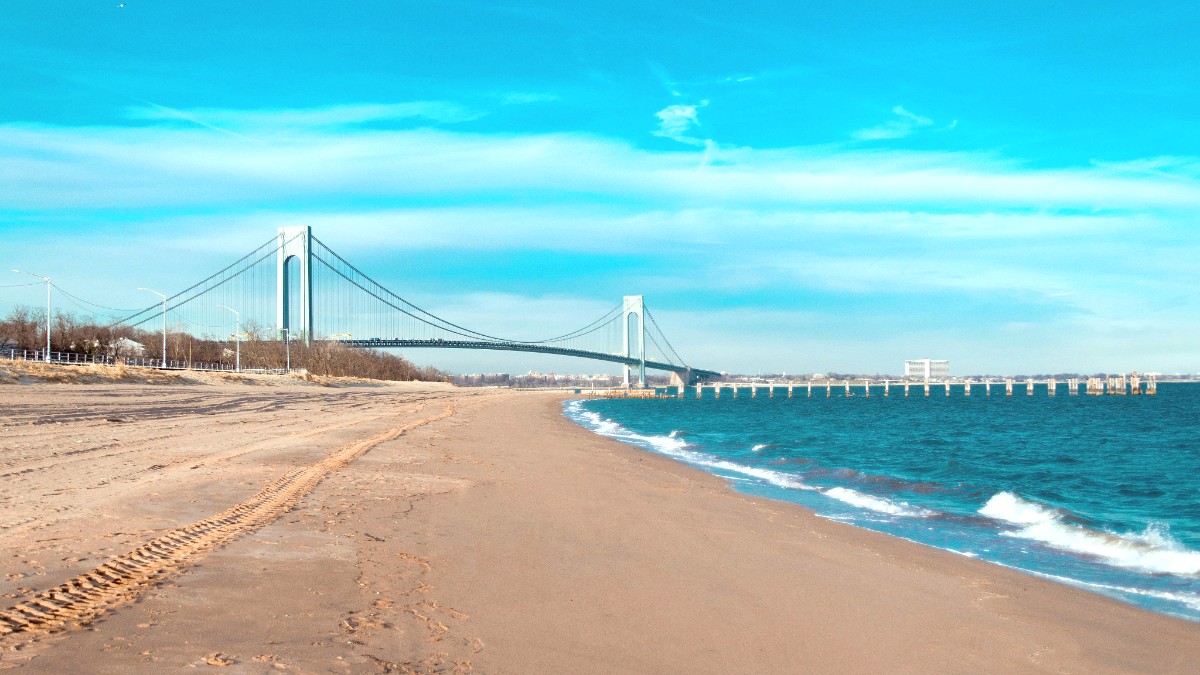
New York City, USA
Explore a destination where nature and history blend with suburban calm, all within the embrace of New York City.
Staten Island is an unique position in New York City’s five boroughs. Situated in the southwest corner of the city, it stands apart, separated by significant waterways that define its borders. To the west, the Arthur Kill and Kill Van Kull waterways separate it from mainland New Jersey, creating a natural boundary that historically shaped its industrial and port activities.
New York Harbor defines its eastern and northern edges, forming the scenic backdrop for the famous Staten Island Ferry journey. This geographical layout means that while you are in New York City, you access a different pace of life, one where nature and community feature prominently.
The island was originally home to the Lenape Native Americans, who called it "Aquehonga Manacknong" or "Eghquaous." They lived off the land and water, fishing, hunting, and cultivating crops. Dutch traders and farmers were the first Europeans to establish a sustained presence in the 17th century, attracted by the island's fertile land and strategic location.
The English gained control in 1664, renaming it "Richmond County." Under English rule, agricultural communities flourished. During the American Revolutionary War, Staten Island served as a loyalist stronghold and a British military base, providing a staging ground for operations.
English gain control, island renamed "Richmond County".
Conference House hosts a peace conference during the Revolutionary War.
Island becomes a port of entry for immigrants and a maritime industry hub.
Verrazzano-Narrows Bridge opens, transforming the borough.
Historic Richmond Town preserves a tangible link to the island's past.
The year 1964 marked a pivotal moment in Staten Island's history with the opening of the Verrazzano-Narrows Bridge. This colossal structure physically linked Staten Island to Brooklyn and, by extension, to the rest of New York City’s road network. The bridge’s completion spurred rapid suburbanization, attracting residents seeking more space and a quieter lifestyle.
This living museum preserves a tangible link to Staten Island’s past, offering visitors a direct experience of the borough’s heritage, from its early agricultural days to its growth as a diverse community.
The island's history remains visible in the architecture of its older neighborhoods, the names of its streets, and the enduring character of its communities, making it a compelling destination.
Staten Island presents a distinct facet of New York City life, offering a refreshing change from the energy of Manhattan, providing space, natural beauty, and a strong sense of community.
Staten Island, sometimes called the "forgotten borough," distinctiveness makes it a worthwhile destination for travelers seeking a different New York experience.
Its population hovers around 492,000, making it the least populous of New York City’s five boroughs. You will find local businesses, community parks, and a less hurried pace of life.
Nearly 2,800 acres of protected forests, wetlands, and open meadows, perfect for hiking and birdwatching.
The free Staten Island Ferry provides a world-class scenic tour of New York Harbor and the Statue of Liberty.
Explore Snug Harbor Cultural Center & Botanical Garden and Historic Richmond Town for history and diverse arts.
Attractions draw visitors and locals alike, showing the island’s varied offerings. From essential transportation to world-class scenic tours, these sites blend history, culture, and nature, appealing to a wide range of interests.